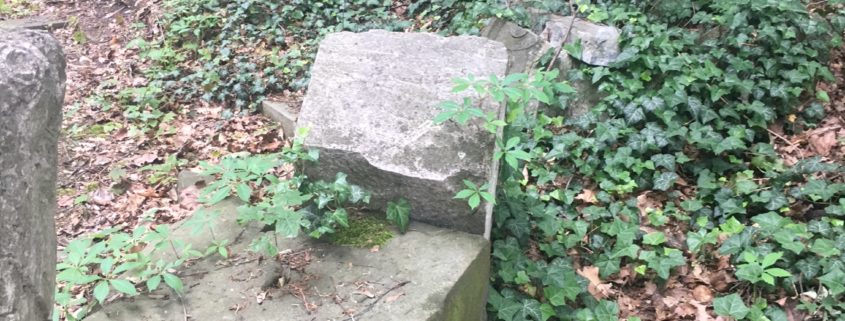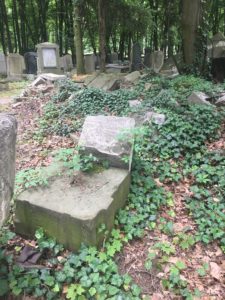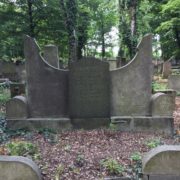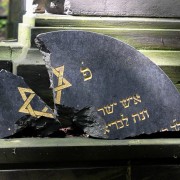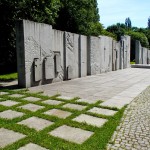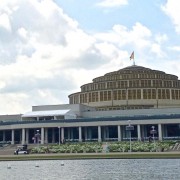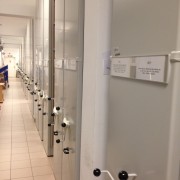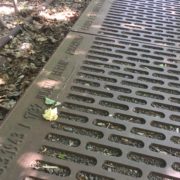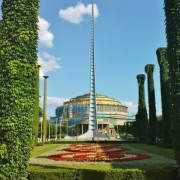Memories Forgotten
By Samantha Schantz
Robert Kennedy once said, “There are people in every time and every land who want to stop history in its tracks. They fear the future, mistrust the present, and invoke the security of a comfortable past which, in fact, never existed.” This quote might apply to the situation of the city of Wroclaw, Poland. After World War II parts of German territory were ceded to Poland. In compensation for territories Poland lost in the East, with significant cultural and economic centers such as Vilnius and Lwow, the country’s borders were pushed westwards incorporating a significant part of pre-war German land. Politicians in now communist-ruled Poland called these newly acquired lands the Polish “recovered territories” and directed the migration of Polish citizens leaving the East here, inviting them to make them their new homes. As Robert Kennedy stated, people try to make history comfortable and to fit the narrative they wish to portray. This is precisely what the Polish government was trying to achieve by adopting the term “recovered territories,” a term that suggested that Poland did not take over German lands after WWII, but was “regaining” territories once controlled by Medieval Poland. With this new history in place, the cleansing of German traces throughout the cities began. The government wished to persuade their uncertain citizens that this was their home, though many felt like strangers in their own residences. However, there was no other option – their former homes and lands were lost in a political bargain to the Soviet Union. This exact feeling is presented in an article written by Gregor Thum in which he describes an account from a Polish student living in a former German house in Wroclaw. She writes, “. . .At present I am stumbling every turn onto things which belong to somebody else, which testify to another life I know nothing about, which testify to the people who built this house, who have been living here, and who now, perhaps, are not alive any more. How could one start a new life here? No, I can’t imagine that I will ever be able to say: This is my house” (Thum, 2003). This quotation highlights the emotions of many of the new settlers to Wroclaw, and other newly-Polish cities in former German lands, who did not feel a connection with their surroundings. The government tried to counter these feelings through programs that sought to erase signs of the region’s German past. German heritage after six long years of war and terror was perceived as oppressive, hostile and foreign. The Polish government’s intent was to destroy every trace of German history in these areas. This meant memorials, churches, and cemeteries were all obliterated. These attempts to create a sense of security and permanancy for citizens only truly resulted in destruction of memory and history. There is a large risk taken when memory is chosen to be destroyed, or even ignored. Walking through the city, one encounters many reminders of this past, one prime example can be found in the New Jewish Cemetery of Wroclaw.
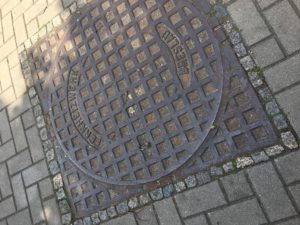
“Even after much effort from the Polish government there are still traces of German Breslau in Wroclaw”
The New Jewish Cemetery was founded in 1902 when Breslau’s Old Jewish Cemetery was filled to capacity. Situated on an expansive piece of land, the New Jewish Cemetery contains the burial plots of many German Jews who passed before World War II, and also contains the sections for Polish Jews who died in the city throughout the postwar era. Upon arrival to the cemetery you become overwhelmed with the sense of destruction all around. You see many overturned graves, weeds up to your belly button, and Nazi related graffiti on gravestones and memorials. One may assume this damage was solely done by the Nazis during their period of occupation, but that assumption would be incorrect. The man-made damage to this cemetery was also done during the 1980s and 1990s by the Polish vandals living in Wroclaw. This cemetery serves as yet another form of memory erasure of the German and Jewish heritage from today’s Polish community, yet this time it is an attack on the memory of individuals. This idea, of preserving the memory of the individual, was a driving force in joining this program for me. Our group contributed to an ongoing preservation project in the cemetery. We are not the only group who has volunteered there, many organizations have been working in this cemetery, such as pupils from local Jewish school and volunteers from German Action Reconciliation. The volunteers from latter organization are more involved in physical preservation work, while our project was much different. Our work included a mapping process, which was made difficult due to a lack of numbered plots as a result of decay, both man-made and natural. We then made a corresponding list of names and information found on the gravestones in our individual plots. We referenced the previous registry books, but they only provided data for burials after 1926. The majority of the burials in our fields preceded this date, so these records provided little assistance. Each group ran into its own challenges that led to their own unique experiences.
My group worked in Field 11. Unlike many of the other fields, we did not encounter extensive vandalism while in this field or any significant challenges that affected our ability to map out and number the field. However, we did come across many issues related to the lack of preservation of the cemetery as a whole. Many of the individual plots did not have stones, and those that did lacked sufficient information to complete our registry. On top of this, the original registry book noting burials after 1926, contained little useful information beyond what we discovered. This lack of information opened our eyes to just how important the duty of memory preservation truly is. We are thrilled we could commemorate the memory of the individuals’ plots we could find, but saddened by the forgotten lives due to the lack of attention to this cemetery.
The cemetery serves as a reminder of how important keeping memory in tact truly is. Since the area was forgotten for so long, in order to restore the land to its original state is near impossible. Yet, we must try as hard as we can because those individuals deserve to have their names and their stories remembered. They were humans with lives, like you and I. Also, like the Germans of Breslau. No memory should ever be erased. No history should ever be stopped in its tracks.
Reference:
Thum, G. (2003). Cleansed Memory: The New Polish Wroclaw (Breslau) and the Expulsion of the Germans. Ethnic Cleansing in Twentieth Century Europe, 333-357.

